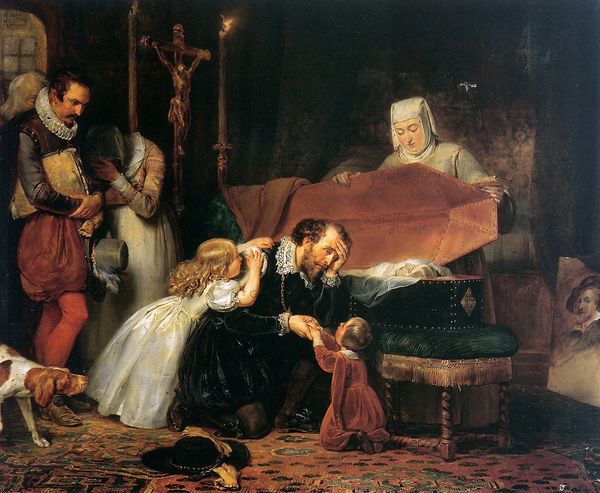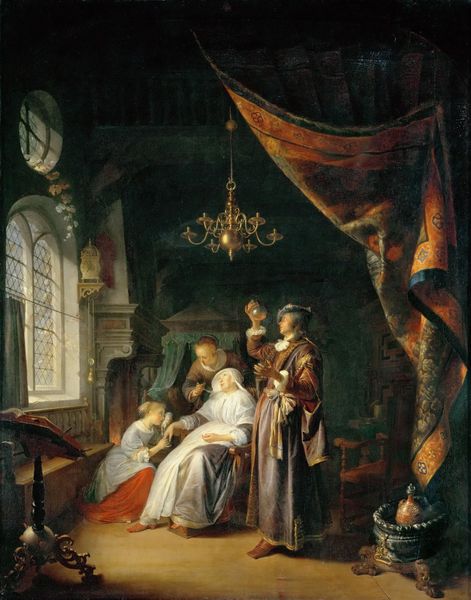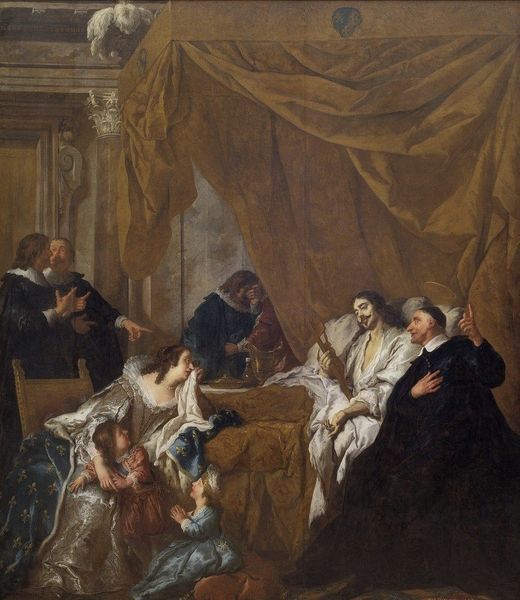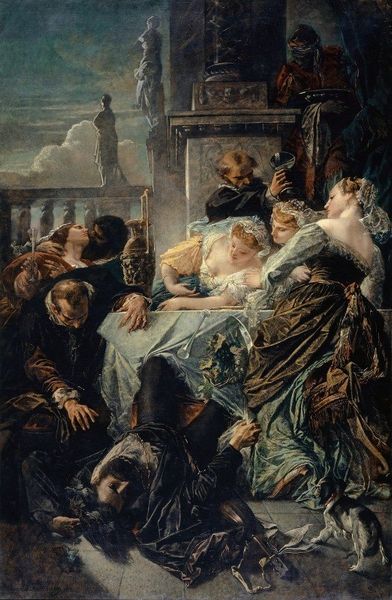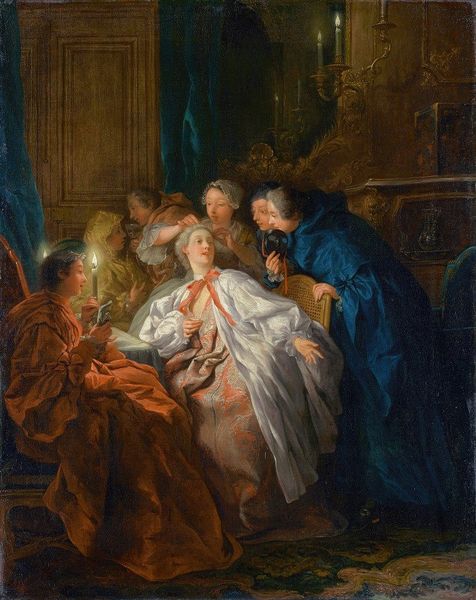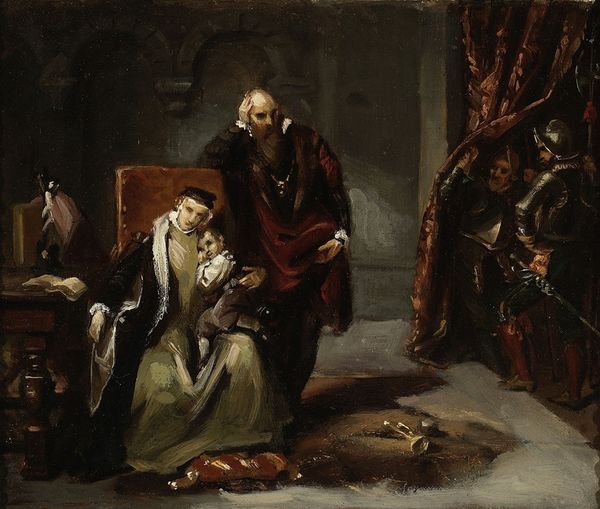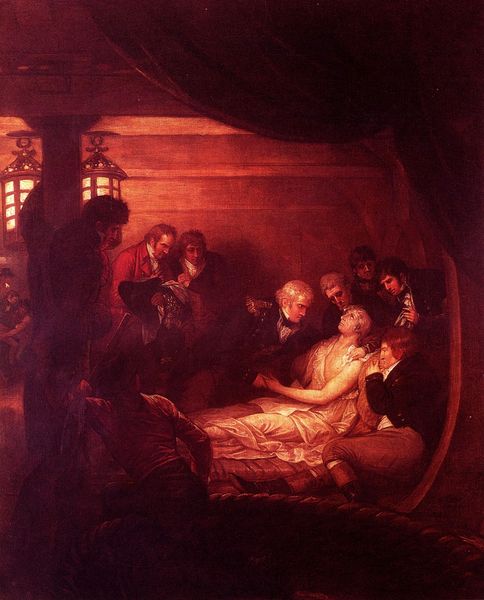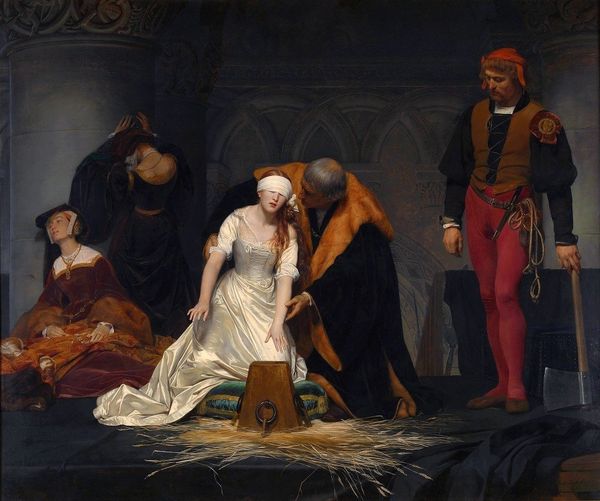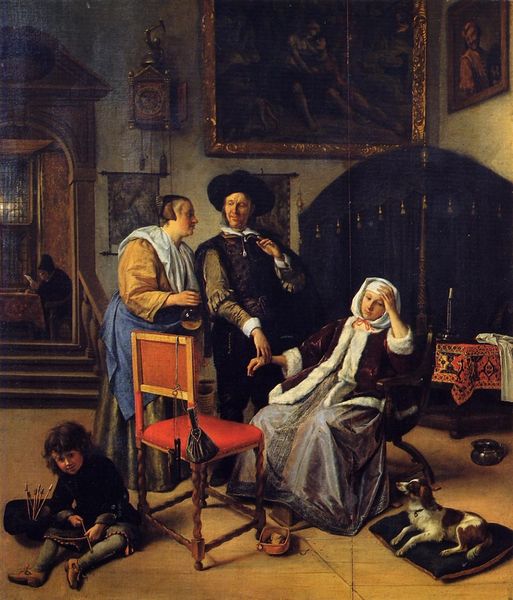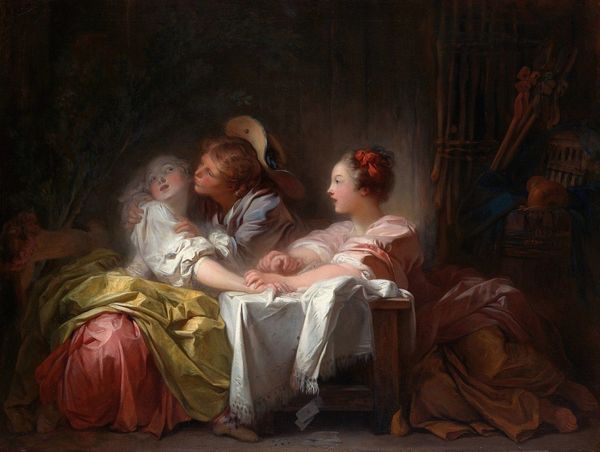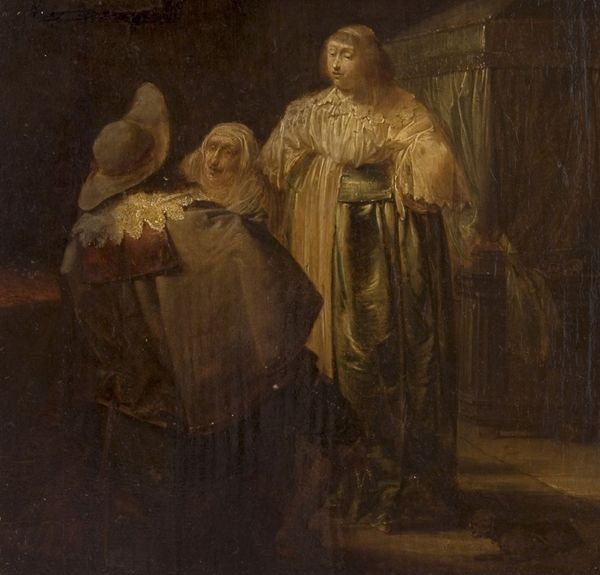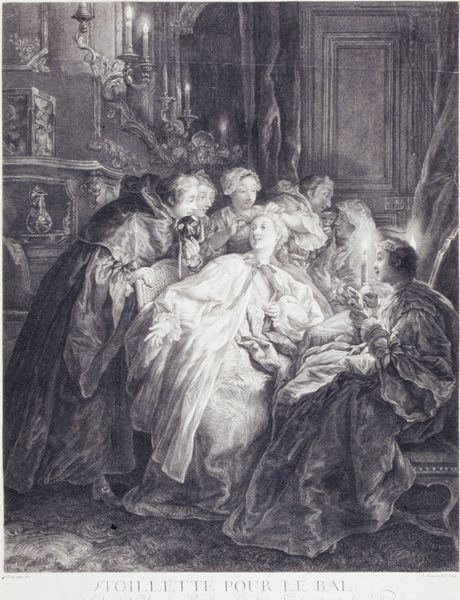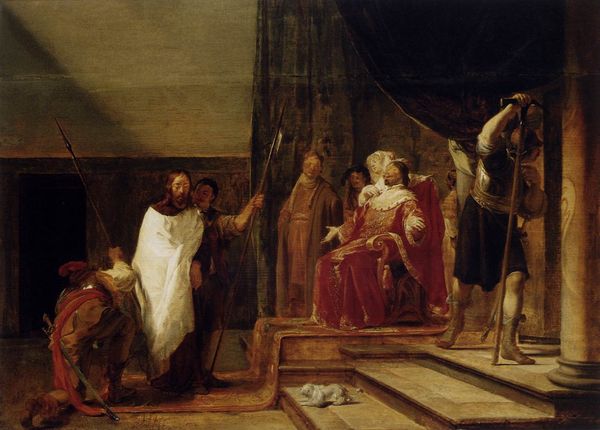
Copyright: Public Domain: Artvee
Editor: This is Alexandre Cabanel's "La veuve du maître de chapelle", or "The Chapel Master's Widow," painted in 1859. It looks like an oil painting. There is a striking stillness, a quiet drama created by the way the figures are grouped and the use of light. What structural elements define the overall composition? Curator: Notice the arrangement of figures in relation to the light source. The figures are bathed in a soft light, almost divided into the part of the canvas closer to the light source. Note how Cabanel has distributed dark colors of the women’s dresses. Also observe the geometric framework around the background shapes and figures and consider how the formal construction contributes to the emotive qualities of the piece. Editor: It's interesting you mention the emotive quality because my initial reaction was how somber the scene appears to be and that is amplified by your comments. But is there an element of symbolism, or meaning within those tonal and color relations? Curator: Semiotically, consider what the light signifies. Is it hope, or merely illumination? Does the color black enhance the idea of mourning? Or is black simply used to highlight the woman's pale face? Also consider that Cabanel employed a subdued color palette with earth tones dominating and ask yourself how these material elements contribute to the overall theme of grief. Do you think Cabanel considered those connotations when selecting black? Editor: So the relationship between the tonal quality and structural composition amplify its theme. Now I see those elements in relation to how Cabanel builds an overall visual impact by orchestrating visual devices like light, dark colors and a subdued tonal palette. Curator: Precisely. Formal elements coalesce to underscore a cohesive composition, don’t they?
Comments
No comments
Be the first to comment and join the conversation on the ultimate creative platform.
